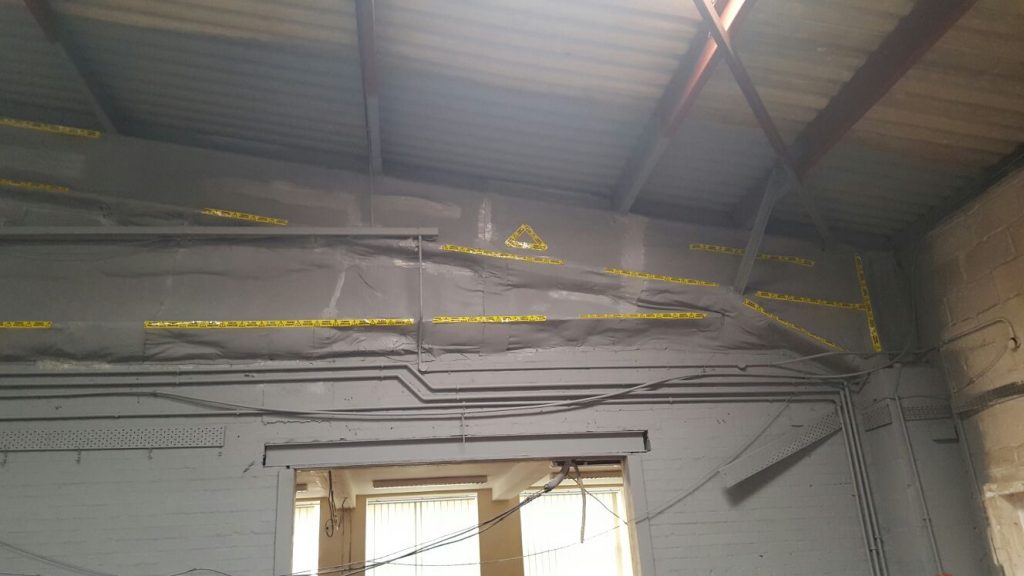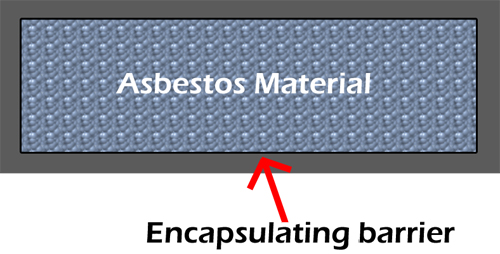
What is Asbestos Encapsulation?
The aim of asbestos encapsulation is to add a protective impervious material to “wrap” the asbestos containing material (ACM) and prevent fibres being released by movement, impact, shock and age degradation. This could be a permanent barrier such as concrete or hard boarding or more commonly with a rubberised paint.
Encapsulation involves sealing raw asbestos products with one or some of a number of methods to seal the raw product from the environment, either with a mechanical or liquid/penetrating encapsulant.
Encapsulating an ACM prevents asbestos fibres being released into the surrounding environment. The health risk associated with asbestos is very well documented and asbestos encapsulation is a regulated activity as per the Control of Asbestos Regulations 2012 (CAR), which means it should only be carried out by a licensed asbestos contractor except under very specific conditions.
When is encapsulation used?
The process of Asbestos encapsulation is often used where access to asbestos containing materials is difficult or where asbestos removal could cause damage to the structure of a building. It is sometimes used as a faster alternative to removing asbestos containing materials (ACMs) which can help prevent downtime or the risk of a refurbishment project overrunning. Asbestos encapsulation should only be used when the material maintains the beneficial properties that the original application was designed for. It is not recommended on severely damaged or degraded materials.
Such examples might include areas where there is a risk of disturbing electrical cables, pipe lagging, and machinery, or where removal of asbestos could risk damaging surrounding building beam supports and roofs. It may also include encapsulation of pipe lagging, doors panels, airing cupboards, ceilings and boiler plant rooms.
Encapsulated asbestos materials will need to be listed within the site survey and managed accordingly.
How long does encapsulation last?

Asbestos encapsulation usually lasts around 20 years, depending on the product to be encapsulated and the location of the asbestos. Encapsulation in areas of extreme weather or strong sunlight may not last as long.
Damaged asbestos materials must not be encapsulated and should be removed using the correct measures.
Can the area still be used whilst Asbestos Encapsulation takes place?
The area where the work is being carried out will be restricted during the process and the direct areas where the encapsulation is taking place will not be able to be used. Building owners or anyone vacating the area should remove all items of furniture, storage, etc. There will also be a 14-day notification period to the Health and Safety Executive applicable depending on the material size and condition of the area to be encapsulated.



